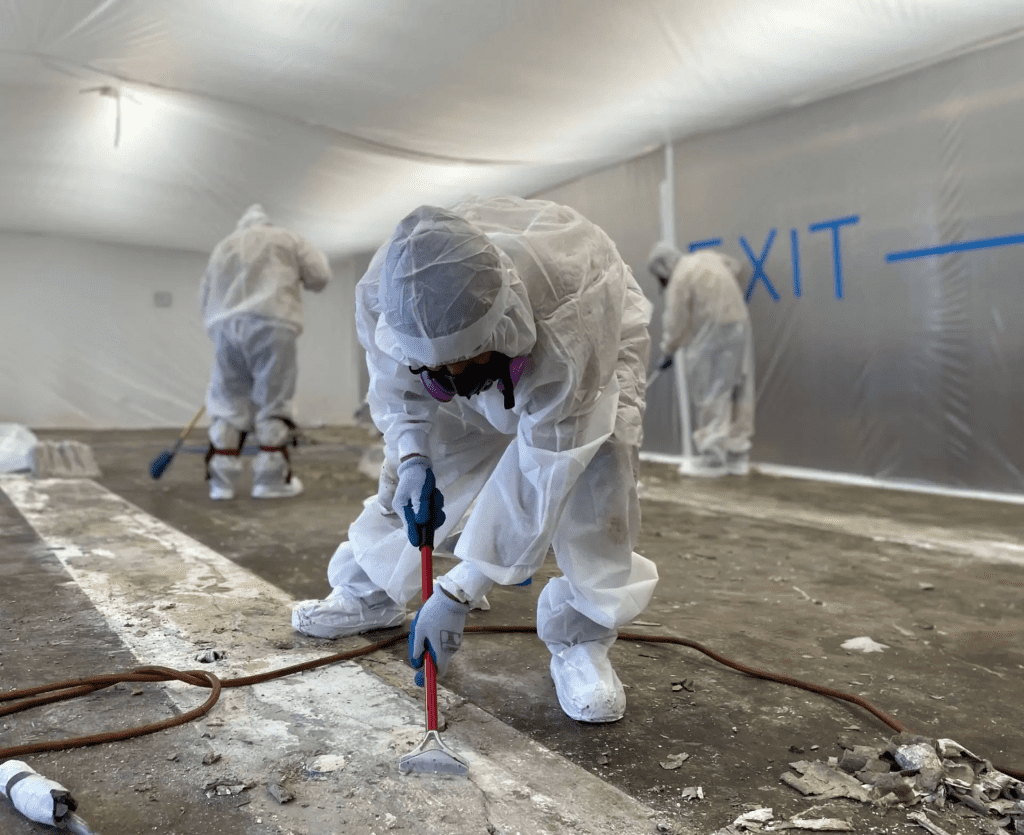Black mold is a silent but aggressive invader that can gradually spread across your home without much notice until it becomes a serious issue. From your bathroom ceiling to the damp corners of your basement, it often goes unnoticed until it begins to release a musty odor or cause visible damage. But the real danger lies in what you can’t see: airborne spores that can affect your health and your home’s structural integrity. This article will walk you through the essential steps to understand, remove, and prevent black mold—especially focusing on how to get rid of black mold in the shower, one of the most common problem areas.
Why It’s Crucial to Know How to Get Rid of Black Mold in Shower Before It Spreads
Black mold in the shower may start as a few dark spots, but it rarely stays small. Because showers stay warm and moist, mold spreads rapidly through grout lines, caulking, and even behind the walls. That’s why learning how to get rid of black mold in the shower is not just about cleanliness it’s about protecting your health and preventing long-term structural damage. The earlier you identify and treat it, the easier it is to remove completely without expensive repairs.
Black mold, commonly known by its scientific name Stachybotrys chartarum, thrives in damp, humid environments. That’s why bathrooms, especially showers, are one of the first places it appears. The steam from daily showers, combined with poor ventilation and lingering water droplets, creates the perfect breeding ground for mold. Unlike regular mildew, black mold is dangerous. It’s toxic, persistent, and it doesn’t just damage your walls or tiles it affects your air quality and your health. For people with asthma, allergies, or compromised immune systems, even brief exposure can cause serious symptoms like chronic coughing, sneezing, skin irritation, and headaches.
The process of getting rid of black mold isn’t just about scrubbing it away. You need to understand the root causes. Mold only grows where moisture is present, so identifying the source of water is just as important as the cleanup itself. For example, a leaky pipe behind your wall, poor ventilation, or even wet towels left on the floor could encourage mold growth. In the shower, areas around the base of the tub, the caulking along the wall, or grout between tiles are the most vulnerable spots. These areas remain wet long after your shower ends, and mold spores, which are always floating in the air, latch onto these moist surfaces and begin to multiply.
Many homeowners make the mistake of reaching straight for bleach. While bleach can remove surface stains from black mold, it doesn’t penetrate porous materials like grout or drywall. This means the mold isn’t actually gone it’s just been whitened temporarily. Within a few days or weeks, it reappears, stronger than before. The better approach is to use natural but powerful cleaners such as white vinegar, hydrogen peroxide, or baking soda. These not only kill mold spores on the surface but also help prevent regrowth when used regularly. Vinegar, in particular, is acidic and can break down the mold structure while being safe for daily use in showers.
When dealing with mold in the shower, it’s critical to scrub the affected area thoroughly, not just spray it. Mold often grows into the tiny pores of grout and silicone caulk, and unless you physically remove those colonies, the spores will stay hidden. Using a stiff-bristle brush and applying vinegar or peroxide generously can make a big difference. After scrubbing, rinse the area with hot water, dry it completely, and then apply a mold-resistant sealant or grout protector. This last step is often overlooked, but it makes a huge difference in future prevention.
Drying the shower area completely after each cleaning session or even after every use is key to long-term mold control. A squeegee or microfiber towel can help remove excess water from tiles, glass doors, and corners. Keeping the bathroom door open and using an exhaust fan or a dehumidifier can also lower humidity, making it less inviting for mold to grow again. For those living in more humid climates, investing in a humidity monitor might be helpful. Aim to keep your bathroom humidity below 60%, and ideally around 40–50%, to stay safe.
Some people notice a persistent musty smell in their bathroom even after cleaning. This usually means mold is hiding out of sight perhaps behind the walls, under the floor, or within ventilation ducts. If you’ve cleaned the visible areas thoroughly but the smell remains, it may be time to call in a mold inspection expert. These professionals use moisture meters and infrared cameras to detect hidden mold without tearing down walls. Once discovered, proper remediation can involve replacing drywall, sealing leaks, or even updating your plumbing.
Preventing black mold from returning is as important as removing it. Many people who search how to get rid of black mold often face the same problem again in just a few weeks. That’s because they didn’t change the conditions that allowed mold to grow in the first place. Beyond just cleaning, think about the design of your bathroom. Poorly sealed windows, outdated ventilation fans, or constant condensation can all create a mold-friendly environment. Upgrading to a more powerful exhaust fan or applying mold-resistant paint to your walls can make a huge difference.
If you find black mold in other areas of your home like the kitchen, laundry room, or basement, the same principles apply: control moisture, clean thoroughly, and prevent it from returning. In basements, leaking foundations and lack of sunlight are common contributors. In kitchens, mold often grows behind the fridge or under the sink. In these cases, white vinegar and hydrogen peroxide work well, but you should also seal any cracks, fix plumbing issues, and maintain airflow in these areas to stop mold from growing back.
There’s also a psychological toll to dealing with mold. Knowing that something dangerous is growing in your home—possibly out of sight can be unsettling. It’s especially stressful for families with small children or elderly members, who are more sensitive to indoor pollutants. This is why it’s essential not to ignore even small patches of black mold. What starts as a few dark spots in your shower can become a full-blown infestation behind the walls within a month if left untreated.
Sometimes people try to cover up mold with paint, wallpaper, or caulk. This not only fails to fix the problem but can also trap moisture and make the mold grow faster underneath. Mold needs to be physically removed and the surface must be dried and treated before any restoration work begins. If a wall or piece of furniture has been infested beyond repair, it’s safer to replace it than to risk your health by keeping it.
In more severe cases, such as mold spreading across ceilings or behind kitchen cabinets, the best solution is professional mold remediation. These services use commercial-grade dehumidifiers, HEPA vacuums, and antimicrobial treatments to fully eliminate mold colonies. They also isolate affected areas to prevent cross-contamination during removal. While this option is more expensive, it provides peace of mind and long-term safety, especially when black mold has affected a large part of the house.
For tenants, dealing with mold can be tricky. If you’re renting and you discover black mold, notify your landlord immediately. In most cases, it’s their responsibility to address water damage and mold problems. Document everything with photos and written communication. Depending on your location, there may be legal protections in place requiring your landlord to make the living space safe and habitable.
On the other hand, if you’re a homeowner preparing to sell your property, it’s important to address any mold issues beforehand. Black mold can derail real estate deals and even lower your property value. Before listing, it’s wise to conduct a home inspection and take care of any visible or hidden mold to ensure a smooth transaction. Many buyers also look for “mold-free” homes and may ask for air quality tests during the home-buying process.
To sum up, getting rid of black mold isn’t just about surface cleaning it’s about understanding the root cause, choosing the right treatment method, and making long term changes to your home environment. Whether it’s mold in the shower, kitchen, or basement, moisture is the main culprit. The more you reduce humidity, the harder it becomes for mold to survive.
So if you’re still wondering how to get rid of black mold in shower, the answer lies in a combination of daily cleaning habits, smart home upgrades, and constant vigilance. Take black mold seriously, act quickly, and never wait for it to go away on its own it won’t.




